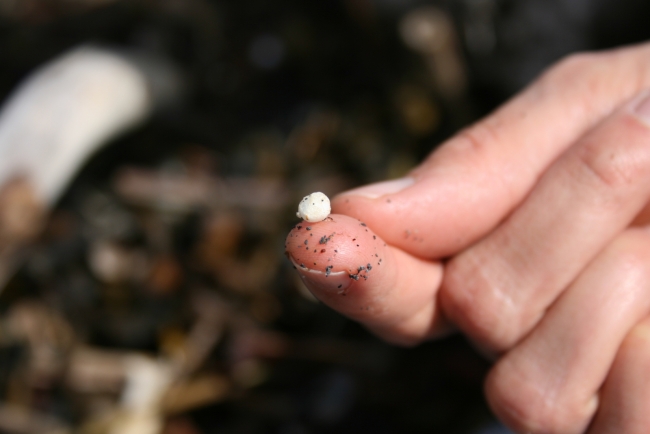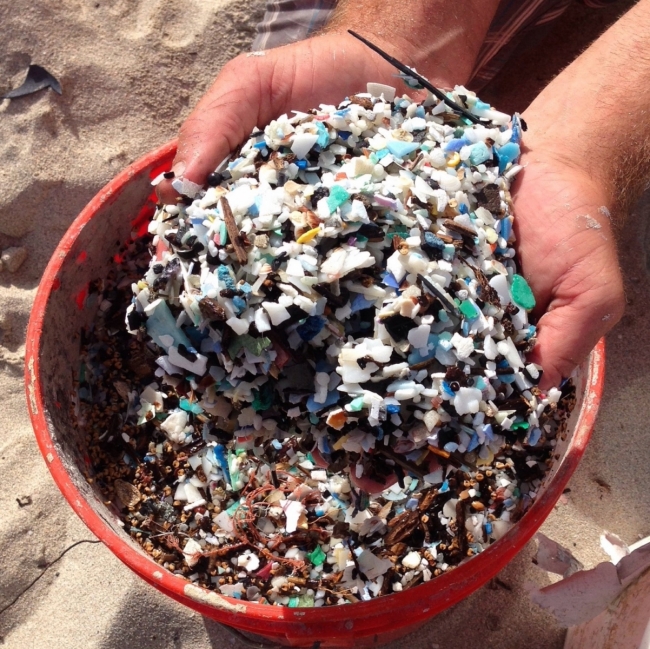We continue to celebrate the ocean as part of National Ocean Month. How much do you know about our ocean and the impacts of marine debris? Get ready to test your knowledge and learn more about marine debris frequently asked questions!
People all over the world are concerned about marine debris and they would like to know more about it. The NOAA Marine Debris Program’s Communications Team responds to those questions we receive through email, and we’ve seen a trend. Following the National Ocean Services theme of Ocean Trivia for this week, we have created our own marine debris “trivia questions” that we hope you enjoy! We would like to share with you the answers to some commonly asked questions about marine debris, what you can do to help address the issue of marine debris, and even give you a little more information about your friends at the NOAA Marine Debris Program. Read on and test your knowledge below!
Question: How many people work for the NOAA Marine Debris Program?
Answer: Just 25 people!
The NOAA Marine Debris Program (MDP) is led by our Director Nancy Wallace and Deputy Director MaryLee Haughwout. Our team consists of our research team, communications team, those who work on emergency response efforts, international collaboration, and grants management. We also have regional coordinators across the nation and two Sea Grant fellows carrying out the Program's mission to investigate and prevent the adverse impacts of marine debris. We may be a small team, but we work together to do as much to help protect our ocean from marine debris as possible!
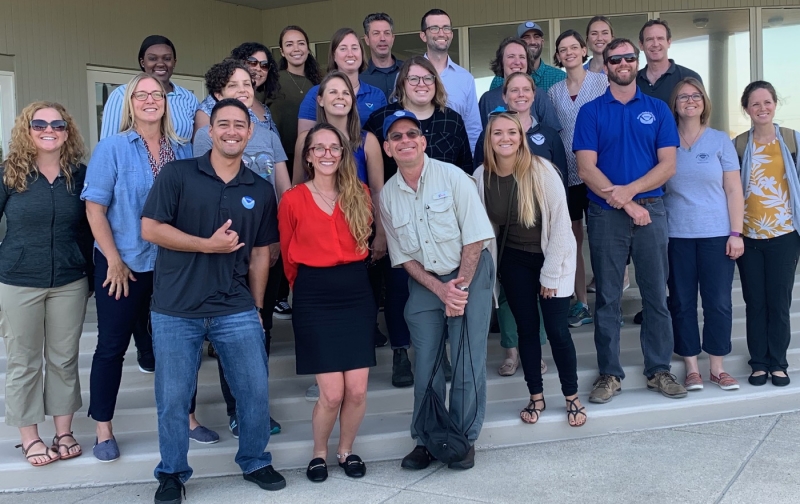
Question: What does the NOAA Marine Debris Program do to address marine debris issues?
Answer: The MDP is authorized by Congress to work on marine debris through the Marine Debris Act, signed into law in 2006 and updated in 2012 and 2018. The Marine Debris Act established the MDP as the federal lead for the U.S. government. MDP envisions the global ocean and its coasts free from the impacts of marine debris. The MDP mission is to investigate and prevent the adverse impacts of marine debris, and achieves its mission through five main pillars: Removal, Prevention, Research, Regional Coordination, and Emergency Response. Our team supports projects and partnerships with state and local agencies, tribes, non-governmental organizations, academia, and industry.
Question: What are some of the different types of marine debris?
Answer: Marine debris is anything man-made that ends up in our marine environment or Great Lakes. Some of the most common types of marine debris include derelict fishing gear and plastics, such as cigarette butts, plastic bags, and food wrappers. Marine debris can range greatly in size from the small plastic particles, called microplastics which are about the size of a pencil eraser or smaller, to huge abandoned and lost vessels. Plastics are made to last a long time and once they are in the marine environment, they will never fully go away.
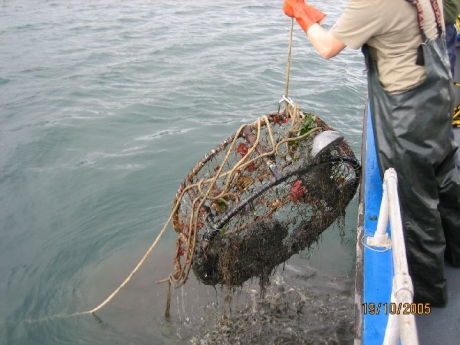
Question: What are microplastics and where do they come from?
Answer: Microplastics are small pieces of plastic or fibers smaller than 5mm in size, or about the size of pea. They come in many forms including beads, fragments, pellets, fibers, and more.
Primary microplastics are made to be small, such as resin pellets and beads. Products like resin pellets are melted and used to create larger plastic items, while microbeads may be found in personal care products, such as toothpaste, face washes, and cosmetics. Microbeads can get into our ocean, waterways, and Great Lakes by washing down your drain and into a wastewater treatment plan. Here, they can end up in sludge or be discharged into the environment with treated wastewater. Plastic pellets can directly enter the environment through a spill during shipping or at a manufacturing facility.
Secondary microplastics come from larger pieces of plastic, such as beverage bottles, bags, and toys. When they are littered or dumped, they can be moved by wind and storms, and travel directly from rivers and streams. Sun, wind, and waves can cause these plastics to become brittle and fragment into smaller and smaller pieces in the environment, though they may never fully go away.
Microplastics can also come from the synthetic materials we use to make clothing, furnishings, and even fishing lines and nets. These microfibers can break apart from larger items from general wear or washing and drying. When in use, fishing nets can shed microfibers directly into the environment, while our clothes can shed them in the wash or into the air around us during normal wear.
Question: Are microplastics affecting animals?
Answer: There’s a lot we don’t know about the impacts of microplastics, and this is a topic being investigated by researchers. We do know that wildlife can mistake microplastics for food and numerous species have been reported to ingest microplastics, from tiny zooplankton to fish and whales. The microplastics and chemicals in the plastics may impact the bodily functions of animals.
Microplastics can also carry harmful pollutants. They may absorb pollutants that are in the water around them, or leach chemicals that are added to plastics to make them colorful or flexible. Although wildlife may ingest or be exposed to these contaminants, more research is needed to understand how they might be affected.
Question: Which parts of the ocean contain the most marine debris and why?
Answer: Unfortunately, marine debris can be found spread throughout the global ocean, from the Arctic to the Antarctic. This is due to the durability of plastics, their widespread use throughout the world, and the ease that ocean currents and wind move plastic debris. Ocean currents and features also cause debris to accumulate, in areas called garbage patches. They are formed by rotating ocean currents, called “gyres.” There are five gyres in the ocean, one in the Indian Ocean, two in the Atlantic Ocean, and two in the Pacific Ocean. The term “garbage patch” might lead you to think these are islands made of plastic floating at the ocean’s surface, but marine debris can be found at the water’s surface, throughout the water column, and all the way down to the ocean floor. Due to winds, waves, and ocean currents, this debris is constantly moving and mixing, making it possible to sail right through a garbage patch and not see any marine debris at all!
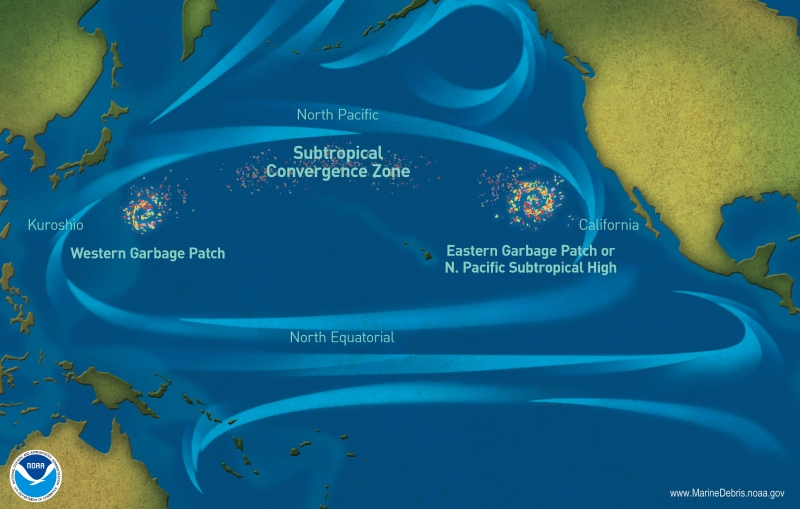
Coastal waters also have high amounts of marine debris, particularly in areas with high population concentrations, inadequate waste management systems, intensive fisheries and/or aquaculture, and high levels of coastal tourism.
Question: What happens to garbage patches if we don’t do anything?
Answer: Right now, the answer is we do not know. The location and size of garbage patches, and the amount of other marine debris found in the ocean, are not likely to decrease any time soon. The amount of debris may continue to grow as more and more debris enters our ocean each year. This will likely worsen the impacts to the environment, navigation, vessel safety, and the economy.
Question: Is there anything I can do to help?
Answer: Yes! Since we as humans contribute to producing marine debris, we also are an important part of the solution to the problem of marine debris. We have an analogy we like to use. Think of marine debris as water in an overflowing sink. First, we must turn off the tap before cleaning up the water, or we will forever be mopping up the overflowing water. If we want to "turn off the tap" on marine debris, everyone, including government, businesses, and people like you, will have to make some meaningful changes.
We can all help by reducing our use of single-use items, like plastic bags, straws, or paper coffee cups, and choosing reusable items, when possible. Another way to help is to model the behavior you want to see in others and follow the 4Rs strategy: Refuse, Reduce, Reuse, and Recycle. This will encourage your friends and family to take action to do the same. Take a look at our website and blog for more information on how you can help address marine debris.


